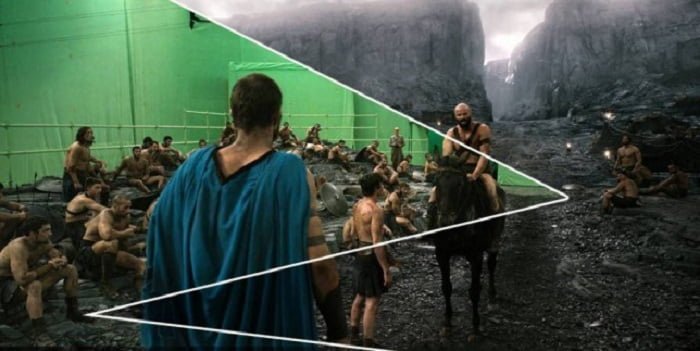In 2009, film enthusiasts fell in love with Avatar, a movie based on humanoids living on a planet called Pandora. Its producers combined computer generated imagery and special effects to create the Na’vi people and their ecosystem. It was the first film in history that grossed more than 2 billion dollars at the box office.
No production has broken this record to date, and people still watch it on sites like The Pirate Bay. Avatar and other CGI films like Jurassic Park and The Terminator changed how people make films significantly. Also, many blockbusters use Computer Generated Imagery as a default visual effect.
How does CGI Works in Films?
CGI uses computer graphics in art, design, and media. The technology renders 3D or 2D objects and animations for virtual reality, video games, and films. Also, complex computer software simulates illusions through images and videos.
Moviemakers use green or blue backgrounds on sets. Later, they add imagined scenarios to achieve their intended effects. Also, it presents quality graphics of large sets or miniature models. A well-done CGI mimics reality and does not look fake.
Movie experts trace the use of CGI to the 1960s. As the craft evolved, its popularity in the film industry soared. James Cameron, a renowned film writer, and producer are particularly known for CGI movies like Avatar and The Terminator. CGI is cheaper than building most movie sets from scratch.
Filmmakers simulate large crowds, creatures, building destructions, and weather changes. Also, several films use computer generated imagery to add prosthetics and makeup effects to alter their characters’ appearance.
The Significance of Computer Generated Imagery in Movies
-
CGI creates characters
In 2001, Gollum on The Lord Of Rings was the first CGI creature ever to grace our screens. Film directors replicated Andy Serki’s movements and imposed them on Gollum. Avatar’s producers used Computer Generated Imagery to create its humanoid characters too. They used facial and motion capture to replicate each actor’s facial expressions and gestures to render them accordingly.
-
CGI recreates our history
As Computer Generated Imagery gained popularity, filmmakers used it to recreate vital bits of our history. For instance, people can visualize Japan’s attack on the U.S. Navy at Pearl Habour. Producers used footage from USS Arizona and CGI visual effects like plumes of smoke to simulate the attack.
-
CGI in Animation Movies
CGI changed stop motion animations significantly. Animators hand- drew each movement frame by frame and compile them into 2D animations. Computers replaced hand-drawing and saved filmmakers a lot of time. This technology allowed creators to build 3D worlds, which make their fantasies a reality.
Pixar set the pace for CGIs in animations with its film Toy Story. It was the first movie company to create an entire film with CGI. Disney and Dreamworks also use this technology to develop award-winning animations.
-
The Limitations of CGI In Films
Some film critics claim that CGI makes film directors unproductive. Moviemakers put less effort and money into productions. Some movies also lose touch with reality because directors exaggerate their fantasies.
What is next for CGI?
Some companies figured out how to use a special effects camera to add Computer Generated Imagery effects. Lucasfilm and Industrial Light Magic (ILM) designed Stagecraft, an innovation that uses physical movie sets and CGI concurrently. It projects movie set backgrounds as actors perform. It has a 270° display of screens that shows the movie set and its simulated environment as cameras roll.
The result is a crisp, realistic scene produced in real-time on set. In comparison, CGI usually adds these effects post-production. Stagecraft also replaces CGI’s green or blue screens. Disney’s movie, The Mandalorian, used Stagecraft in its production. Critics speculate that Stagecraft is the next big technology in the film industry.
Conclusion:
Computer Generated Imagery influenced the trajectory of our film industry. Also, most high-grossing films use this innovation to bridge the gap between reality and fantasy. Computer Generated Imagery plays a significant role in creating movies like animations. Stagecraft is the latest innovation in CGI that projects backgrounds as actors and producers film a movie.
Notably, CGIs affect creativity in movie producers. When moviemakers misuse Computer Generated Imagery, films also look unappealing and unrealistic.


